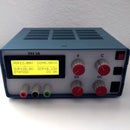Introduction: Wire Wrapping Wire Stripper
This is a Wire Wrapping Wire stripper that can result very useful for building prototypes. It uses cutter blades and the scales have been manufactured with affordable prototype PCBs.
Ordering PCBs for projects at home is very economical and an easier-than-ever option, but sometimes building a quick prototype without expending time designing the PCB and waiting for the delivery is a better option. Solderless breadboards are good for testing while developing but, for something definitive, using a perfboard and soldering the parts is a very good option.
Wire Wrapping Wiring as a technique for prototyping is a good option although it has some problems: only works with long leaded parts, the wire does not wrap that good in parts with cylindrical leads and the wrapping tools are generally expensive.
A very good option is using just the Wrapping Cable, that can be cut and stripped very easily, soldering to the parts directly. This enables more options, like SMT parts. Also, the current supported by these wires is acceptable for a lot of applications ~1A and eventually they could be paralleled. There are some examples of prototypes made with this technique in the photos.
Step 1: Parts
Apart from the PCB scales, that can be ordered online, the rest of the parts can be purchased on eBay:
1. Blades.
2. Button Head M3 Screws Kit (used the 4mm ones).
Step 2: Scales Design
The Scales hold the blades in position and make possible grabbing the tool, each stripper needs 2 scales. The design has been made using DraftSight to generate a dxf file that includes the "board outline" and the position of the holes. Later, this dxf file has been imported into Eagle PCB to generate a PCB with all the manufacturing information, that can be ordered.
I have ordered the PCBs on PCBWay.com.
The Gerber files can be downloaded in this step.
Attachments
Step 3: Assembly
1. Tap the 2.5mm holes of one of the scales with an M3 tapping drill bit.
2. Redrill the 2.5mm holes of the other scale with a 3mm drilling bit.
3. Mark and cut the blades to fit in the scales, they have scoring marks that allow splitting them just bending.
4. Assembly the cable stripper without tighten the screws.
Step 4: Adjusting
1. Find a thick piece of paper.
2. Tighten lightly the screws of one of the blades.
3. Put the paper between the blades and press the loose blade against the other, the remaining piece of the blade after splitting can be used for pushing.
4. Tighten all the screws firmly.

Participated in the
Pocket Sized Contest












